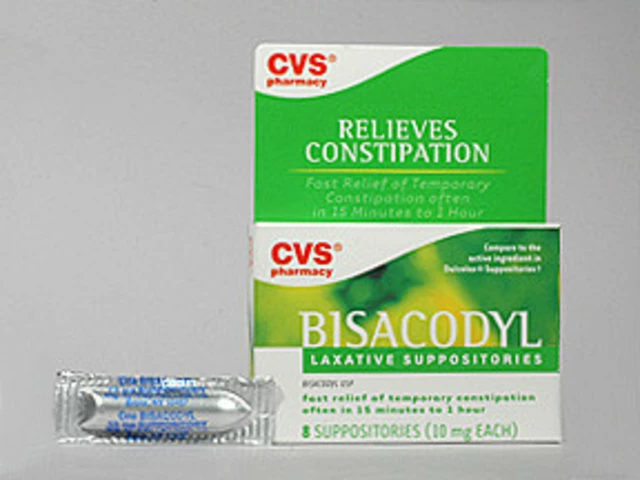Why Do RA Drugs Cause Hair Shedding? The Truth About Telogen Effluvium
Imagine you’re fighting off pain and swelling from rheumatoid arthritis (RA), finally getting your symptoms under control with RA drugs, only to notice your hair thinning in the shower drain. That’s just brutal, isn’t it? Hair shedding can feel like one unfair trade for another, especially when you’re dealing with tough meds like methotrexate, sulfasalazine, and the family of modern biologics. But why do these medications, designed to help your joints, end up stealing hair from your head?
For most folks, what’s happening here isn’t sudden baldness or permanent hair loss. It’s something called “telogen effluvium.” Basically, it’s a temporary phase where more hairs than usual jump from the growing stage into the resting, and then—boom—start falling out a couple of months after the trigger. That trigger? It can be a new medication, a big stressor, or even a brand-new illness, like RA itself.
Methotrexate tops the list of RA drugs tied to this. Why? Methotrexate can mess with folate metabolism, which your body needs for all cells that grow and divide fast—like hair follicles. When those follicles don’t get what they need, hairs switch from growth mode straight to snooze mode. Sulfasalazine has a similar, though less common, effect, possibly by way of nutrient depletion or direct impact on the hair cycle. Biologics are trickier. Some, like etanercept and adalimumab, have been linked in case studies to hair loss, usually as a rare or unpredictable side effect, likely tied to immune changes messing with your hair’s natural cycle.
Why does it hit some people and not others? Genetics, your dosage, your personal stress levels, and how your body handles meds all play a role. For many, the shedding might start a couple of months after starting or upping the dose, but often tapers off on its own. The mystery is deep—most people don’t lose all their hair, but the emotional impact makes it tough to just ignore. Add to that the fact that RA itself can cause hair loss (thanks to inflammation and physical stress), and it’s no wonder so many are left scratching their heads.
Here’s something rarely discussed: in one clinical review, up to 20% of those on long-term methotrexate reported significant hair thinning. That adds up, and doctors often don’t tell you at the start. So, if you begin to spot extra hair on your pillow, you’re not imagining it. The drug is likely involved, but there are ways to fight back.
Methotrexate: Folate, Dosage, and the Hair Connection
If methotrexate is a superstar in the RA world, it’s got a dark side—methotrexate hair shedding. Doctors prescribe this drug all over Australia and beyond; it’s been on the market for decades and remains the gold standard for moderate to severe RA. But take a look at common side effects, and hair loss always sneaks in, usually under the label of "less common" or "rare." In practice, about one in five patients will notice a difference over time, and for some, it’s enough to consider ditching the drug.
So, what does methotrexate do that spooks your follicles? It blocks the action of an enzyme your body uses to process folate, a B vitamin essential for growth and repair. Folate is critical for making new cells—including hair cells. No folate, no robust hair growth. At higher doses, this effect is more pronounced, which is why cancer patients getting mega-doses of methotrexate often lose all their hair. RA doses are a fraction of that, but the slowdown is enough to push vulnerable hairs into resting phase.
Research out of Melbourne’s Alfred Hospital showed that supplementing folic acid can reduce or even fully prevent this side effect for many on long-term methotrexate therapy. Still, not everyone responds to extra folate—some folks find their hair still slips away, especially if they need higher doses to control their arthritis. Age, gender, and your individual folate metabolism matter, so finding the right supplement routine can take a few tries with your doc.
What about stopping methotrexate—will your hair come back? Usually, yes, but it can take months. That’s because telogen effluvium reverses slowly. Once you stop the trigger, it takes a cycle or two (sometimes three to six months) for follicles to reset and start new growth. During that window, hair might look thinner, but steady regrowth kicks in if the trigger is truly gone. For many, it’s a question of patience and continued folate support.
Some practical tips if you’re struggling here: stick to your folic acid supplement at the dose recommended by your rheumatologist, avoid crash diets (which can worsen hair loss), focus on gentle hair care (no tight ponytails or hot styling tools), and manage stress levels. If shedding feels extreme, talk to your doctor about reducing the dose or spacing out your methotrexate (sometimes a small tweak makes a big difference).
For women, especially, who are more likely to struggle with drug-induced hair loss, this effect can feel like a punch to self-esteem. Some turn to topical minoxidil or over-the-counter thickening shampoos, though evidence for these in drug-induced shedding is mixed. But if folic acid and patience don’t cut it, it’s worth asking your specialist about alternatives or dose adjustments.

Sulfasalazine and Hair Loss: What’s Fact, What’s Hype?
Sulfasalazine doesn’t get as much press as methotrexate, but it’s still prescribed for lots of RA patients, especially those who can’t tolerate methotrexate or want to avoid biologics. Like methotrexate, sulfasalazine can trigger telogen effluvium, but less frequently. Still, if it happens to you, it doesn’t matter how rare it is—it’s a real headache (and hairache).
The hair shedding here often kicks off a couple months after starting the medication. What causes it? Several theories exist: sulfasalazine may block absorption of nutrients like folic acid and zinc, both vital for hair growth. Or, the drug could interact with the immune system in a way that nudges more hairs into resting mode. Either way, the effect is typically diffuse—meaning, you don’t get bald patches or classic male-pattern baldness. Instead, your shower drain tells the story: more strands, everywhere.
One big question looms: does sulfasalazine cause hair loss often enough to worry about? According to cohort studies out of the UK, less than five percent of users experience noticeable hair thinning, but there’s no clear way to predict who’s most at risk. As always, if you have a family history of hair loss or start new medications, your chances go up slightly. Sulfasalazine is also sometimes paired with methotrexate, and combination treatment appears slightly more likely to cause noticeable shedding.
If you’re stuck with sulfasalazine shedding, some relief might come from switching brands (as binders or fillers vary), upping your dietary intake of folate, iron, and zinc, or adding high-quality supplements. Keeping an eye on regular blood work helps, since some folks develop minor anemia or low zinc on this med, both of which can affect hair health. Make sure your levels are solid, and flag anything strange to your RA nurse or rheumatologist.
Don’t forget—sulfasalazine is notorious for color changes (even giving urine and tears an orange tint!), but the hair loss effect is subtle and usually temporary. Most shed only lasts a few months. But for those who persistently lose hair, your doctor can consider lowering the dose, spacing out the schedule, or switching you to another DMARD (disease-modifying anti-rheumatic drug).
Biologics: Modern Meds, Unexpected Hair Stories
Biologics are, without question, one of the game-changers in RA treatment. These drugs target specific parts of the immune system and have let thousands ditch their wheelchairs and go back to living pretty normal lives. But as with every group of powerful meds, there’s a flip-side—and in this case, some biologics are linked to biologics and alopecia, or patchy hair loss.
Let’s get concrete: Tumor necrosis factor inhibitors (TNFi) like etanercept, infliximab, and adalimumab are the most commonly reported in literature to cause hair changes. Unlike methotrexate and sulfasalazine, which trigger diffuse shedding, biologics have been tied—rarely—to alopecia areata, a condition where the immune system targets hair follicles, leaving behind round, bald patches. The timing varies; some people notice small bald spots a few months into therapy. Others only experience thinning or increased shedding.
Why do these drugs mess with hair? The working theory is that shifting your immune response (especially suppressing TNF-alpha) disrupts the normal immune protection around hair bulbs. For some unlucky people, this triggers the body to attack its own hair follicles. Case reports in Australia and Europe describe the cycle: a patient starts a biologic, controls their RA, then spots develop, and sometimes switch to new biologics clears the issue. Most folks don’t get full-blown alopecia, but patchy or mild shedding isn’t uncommon.
Here’s the good news—most people either adjust to the med and find hair regrows, or can switch to a different biologic without lasting hair loss. If you’re noticing patches, take photos so you can track progress (hair can appear thicker or thinner depending on the light, so a record helps). Talk to your specialist about the risk/benefit balance for you personally. Sometimes adding topical steroids or minoxidil can speed up regrowth if the follicle hasn’t fully shut down. No solution is perfect, but staying in close touch with your care team is the move here.
For data lovers, here’s a small but fascinating table collecting data from recent Australian cases:
| Biologic Drug | Reported Hair Effect | Average Time to Onset | Chance of Full Recovery |
|---|---|---|---|
| Etanercept | Alopecia areata patches | 6-12 weeks | 85% |
| Adalimumab | Increased diffuse shedding | 3-4 months | 75% |
| Infliximab | Spotty thinning | 2-6 months | 80% |
This isn’t a guarantee—talk to your doctor before ascribing every hair on your brush to RA biologics, but the patterns are showing up more as these drugs get widespread use.

Beating Drug-Triggered Hair Shedding: What Really Helps?
The million-dollar question—how do you *actually* stop RA drug-related hair loss? There’s no miracle, but a lot you can do to keep every strand you can and to encourage regrowth.
- Stick with the medication if your RA is under control. For most, telogen effluvium peaks and then calms down on its own, as the body gets used to the drug.
- Folic acid supplementation is non-negotiable for methotrexate (and very useful for sulfasalazine). The usual dose is 1mg daily or as your doc directs.
- Check for other causes. Low iron, vitamin D, B12, or thyroid problems can mimic drug-induced shedding. Get your bloods checked and correct any low levels.
- Manage stress. RA flares are already stressful—add hair loss and your stress hormones will skyrocket, which can ramp up shedding on its own. Try practical calming practices: meditation, gentle exercise, or even just getting enough sleep.
- Avoid harsh hair treatments. Skip chemical dyes and perms and swap for gentle, sulfate-free shampoos and conditioners. Support the hair you have.
- Track progress. Snap photos monthly of your hairline and part. Seeing subtle changes over time helps you (and your doctor) know what’s working, instead of guessing.
- Talk options if needed. If the shedding isn’t slowing after six months, ask your rheumatologist about lowering doses, switching meds, or adding minoxidil solution. Hair usually bounces back after the trigger is removed, but early action helps.
Keep in mind, hair grows about a centimeter per month on average. Recovery after telogen effluvium takes patience, sometimes longer than you’d like. But unless there’s scarring or ongoing damage, regrowth is the rule, not the exception.
If you’re worried about nutritional gaps, focus your meals around lean protein, whole grains, nuts, seeds, eggs, and lots of colorful veg. Aussie dietitians recommend going heavy on B vitamins and zinc. Collagen supplements are trendy, but research for drug-triggered telogen effluvium is weak. If you notice scalp flaking or irritation, add a hydrating mask once a week (think coconut oil or gentle, natural ingredients).
One last thing—if your hair fall is severe, rapid, and comes with scaly patches, speak up. It could signal scalp issues unrelated to your RA meds, like fungal infections or psoriasis, both of which also need different kinds of treatment.
Living with RA and managing the side effects of modern medicine is never easy. But knowing what’s going on under the surface—and being honest with your doctors if things aren’t right—puts the power back in your hands, strand by strand. The good news? Most people see regrowth with the right care and patience, and your journey to better joint health doesn’t need to cost you your hair.



brandon lee
27 April / 2025I’ve been on methotrexate for a year and the extra hair in my shower was the first thing I noticed.
Turns out it’s a classic telogen effluvium thing.
The good news is it usually settles after a few months once the body adapts.